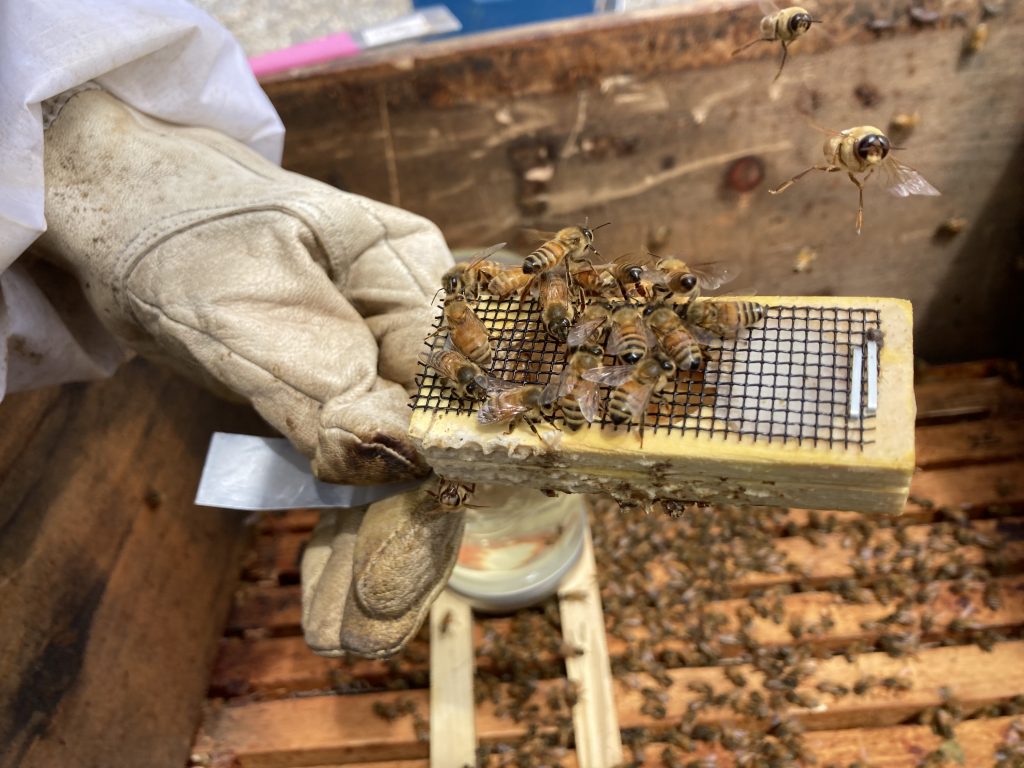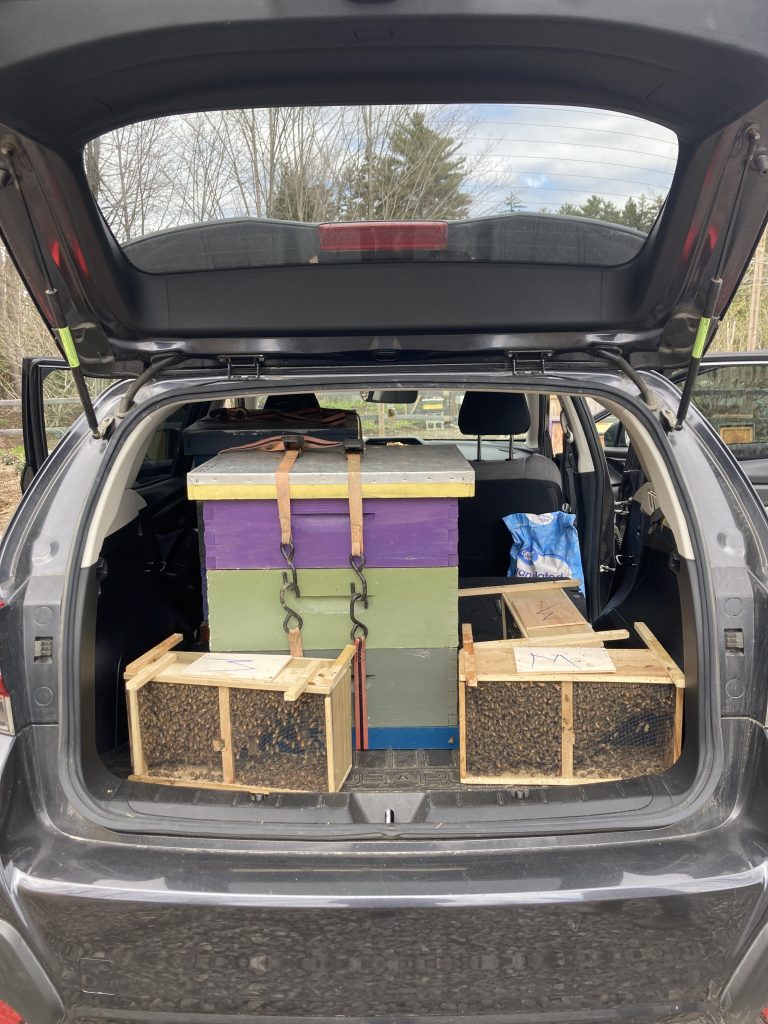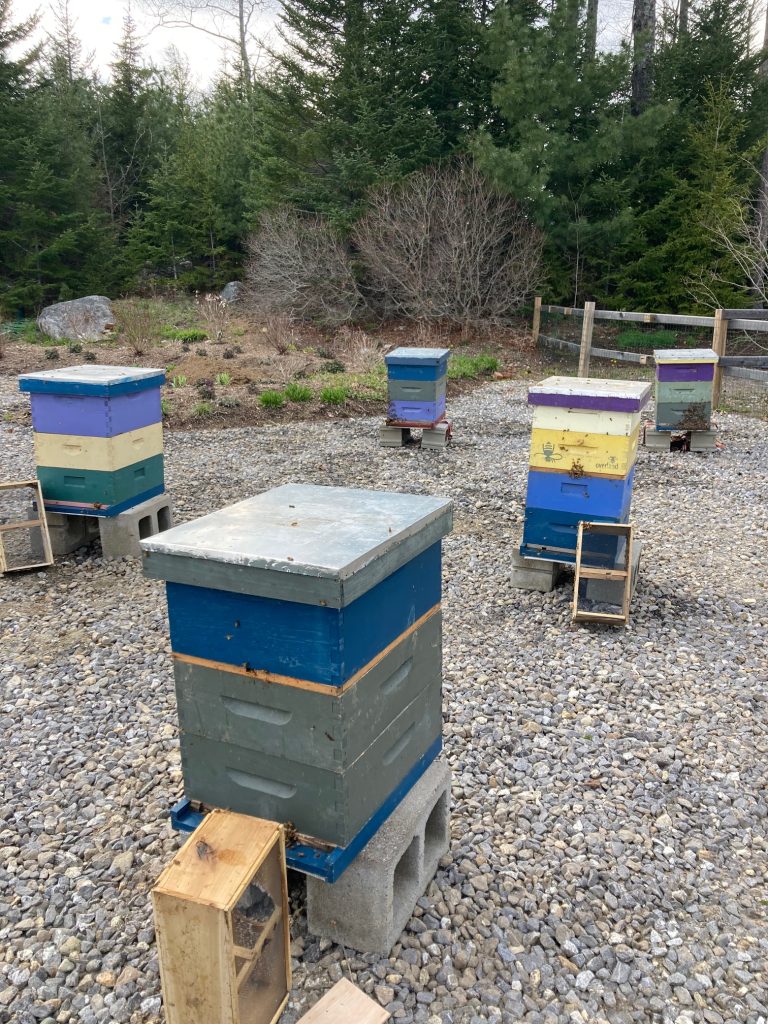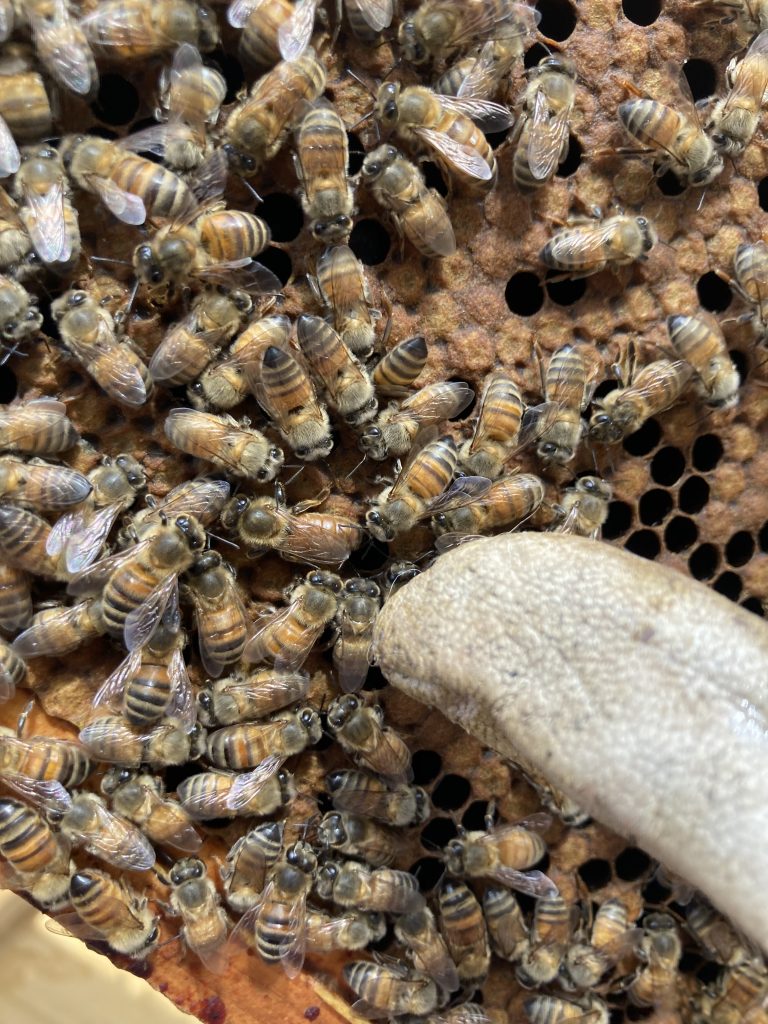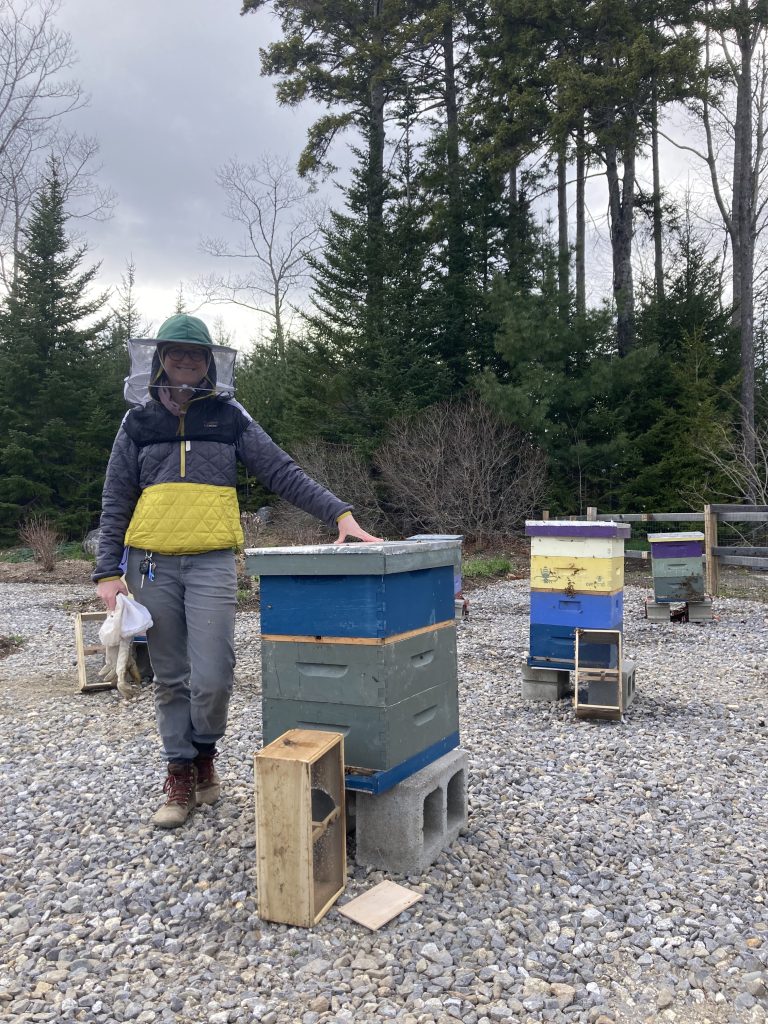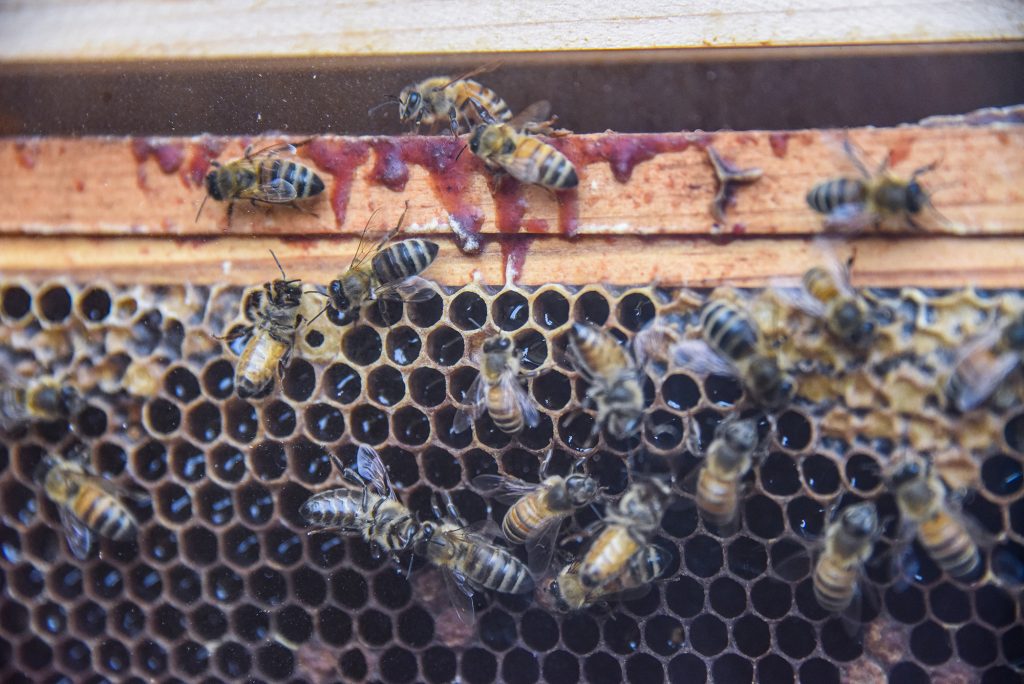First, we opened up the top hive body, took out 3-4 frames and get ready to dump the bees in. It is best not to smoke the bees during package install. Because they do not have any resources to protect, they are unlikely to be defensive and the less their pheromones are disrupted, the more likely they will stay together. Sarah misted the bees a bit with some sugar water—this helps limit their ability to fly and keeps them calm and distracted cleaning themselves while we work with them. Next, we pried off the piece of wood blocking the feeder can and set it aside. Then it was time to pull the can and queen cage out of the package. I told myself this would be a smooth process and everything was going to pop right out easily, but it never is as easy as it looks! First, we tapped the package firmly on the ground so that bees all fall to the bottom. Then, after some yanking and pulling, I finally pried the can loose from the package, pulled the queen cage out, and covered the package hole back up with the thin wooden cover, miraculously not letting many bees out in the process. We checked the queen to make sure she was alive and put her aside. Now for the fun part! I knocked the bees back to the bottom of the package, gave them another little misting, removed the lid, and dumped (or rather, poured) them into the space where we removed the frames. This is not tender process, but does not hurt the bees and is the safest and fastest way. I gave a few hard shakes, tipping the package so the bees slid out, making sure to get most of them out and into the hive. Removing the frames allows the bees to disperse right down into the hive. I can’t help but chuckle watching thousands of bees plop into their new home. We propped the package, with the straggler bees, against the front entrance of the hive (they’ll find their way in eventually) and carefully added the frames.
Now for the queen. Each end of the queen cage was plugged with a tiny cork, and in one end beneath the cork is a chunk of candy. We removed the cork above the candy; the worker bees will slowly eat this, releasing the queen within a few days. This delay allows the colony extra time to recognize her as the queen; if we were to release her right away, they may kill her and never form a colony. After removing the candy-side cork, we squeezed the queen in her cage between two interior frames.
